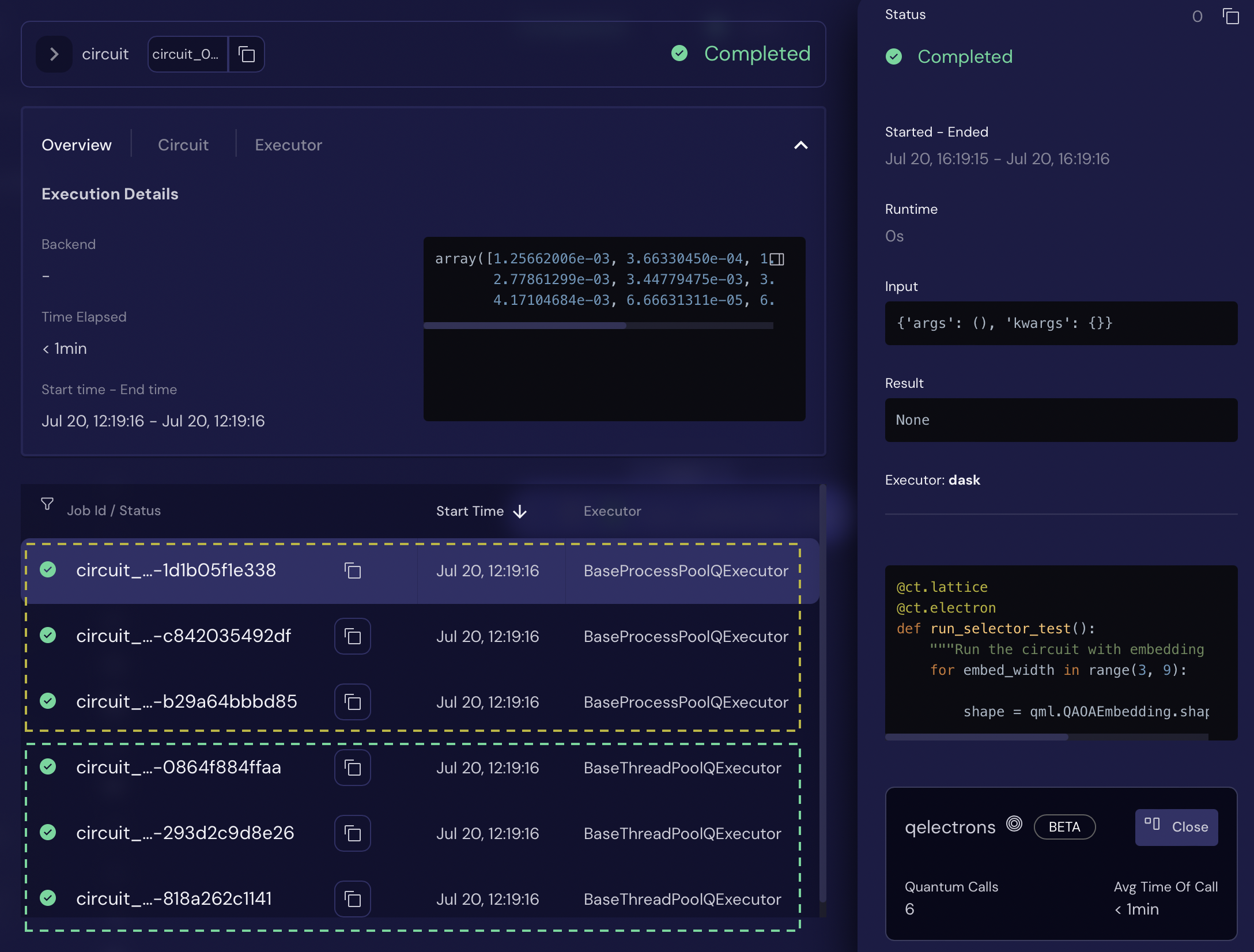Defining Custom Selector for a Quantum Cluster
Required Selector Interface
A purpose of a QCluster’s selector is to choose an executor (an instance of BaseQExecutor) for each submitted circuit (a Pennylane QuantumScript).
Any valid selector function must accept two arguments and return a single executor.
def custom_selector(
qscript: QuantumScript,
executors: List[BaseQExecutor]
) -> BaseQExecutor:
# selection logic here
...
# return executor
Furthermore, a valid selector function must be picklable.
It is also permissible to define a stateful selector class, so long as it implements a __call__ method with the required signature.
class MyStatefulSelector:
"""A clone of the built-in `"cyclic"` selector"""
def __init__(self, start: int):
self.counter = start # state variable
# Implements the required interface.
def __call__(self, qscript, executors):
selection = executors[self.counter % len(executors)]
self.counter += 1
return selection
Statefulness can also be achieved by using function attributes on a selector function.
Circuit-Specific Selector Example
Note that MyStatefulSelector ignores the qscript argument of its __call__ method. This is fine if cycling through executors for every submitted circuit is the desired behaviour. To achieve circuit-specific behaviour, however, the selection logic must depend on the qscript argument.
For example, the following code defines a selector (custom_selector) that chooses between two simulators based on the minimum number of qubits required to execute the qscript.
import covalent as ct
DEVICE_WIRES = 10
# Initialize thread- and process-based simulators.
SIMULATORS = [
ct.executor.Simulator(parallel="thread"),
ct.executor.Simulator(parallel="process"),
]
def custom_selector(qscript, executors):
"""
Picks process-based executor iff more than half of the
device's wires are used in the quantum script.
"""
wire_limit = DEVICE_WIRES // 2
# Choose based on minimum number of qubits.
if qscript.specs["num_used_wires"] > wire_limit:
parallel = "process"
else:
parallel = "thread"
# Grab the first matching executor.
selection = next(
filter(lambda ex: ex.parallel == parallel, executors),
executors[-1], # default to avoid error
)
print(f"selected {selection.parallel}-based simulator")
return selection
A QElectron (circuit) that uses the above is then defined in the usual way, by decorating a QNode.
import pennylane as qml
dev = qml.device("default.qubit", wires=DEVICE_WIRES)
@ct.qelectron(executors=SIMULATORS, selector=custom_selector)
@qml.qnode(dev)
def circuit(features, weights, wires):
qml.QAOAEmbedding(features, weights, wires)
# Return probs of used wires only.
return qml.probs(wires=range(weights.shape[1] // 2))
Here, calling circuit applies a variable-width embedding, depending on the wires argument, which is precisely the value of "num_used_wires" in the qscript.specs dictionary.
The QElectron therefore exhibits the following behaviour.
from pennylane import numpy as np
def run_selector_test():
"""Run the circuit with embedding width = 3, 4, 5, 6, 7, 8."""
for embed_width in range(3, 9):
shape = qml.QAOAEmbedding.shape(n_layers=1, n_wires=embed_width)
weights = np.random.uniform(0, 2 * np.pi, size=shape)
features = [.1, .2, .3]
circuit(features, weights, wires=range(embed_width))
>>> run_selector_test()
selected thread-based simulator
selected thread-based simulator
selected thread-based simulator
selected process-based simulator
selected process-based simulator
selected process-based simulator
With a quick modification, we can run the above inside a Covalent workflow to demonstrate QElectron integration with the Covalent UI. Classical electrons containing quantum electrons have a circular icon in their node indicating existence of atleast one quantum electron call inside of them.
# Covalent pattern for a minimal, one-node workflow.
@ct.lattice
@ct.electron
def run_selector_test():
"""Run the circuit with embedding width = 3, 4, 5, 6, 7, 8."""
for embed_width in range(3, 9):
shape = qml.QAOAEmbedding.shape(n_layers=1, n_wires=embed_width)
weights = np.random.uniform(0, 2 * np.pi, size=shape)
features = [.1, .2, .3]
circuit(features, weights, wires=range(embed_width))
# Dispatch the workflow.
dispatch_id = ct.dispatch(run_selector_test)()

